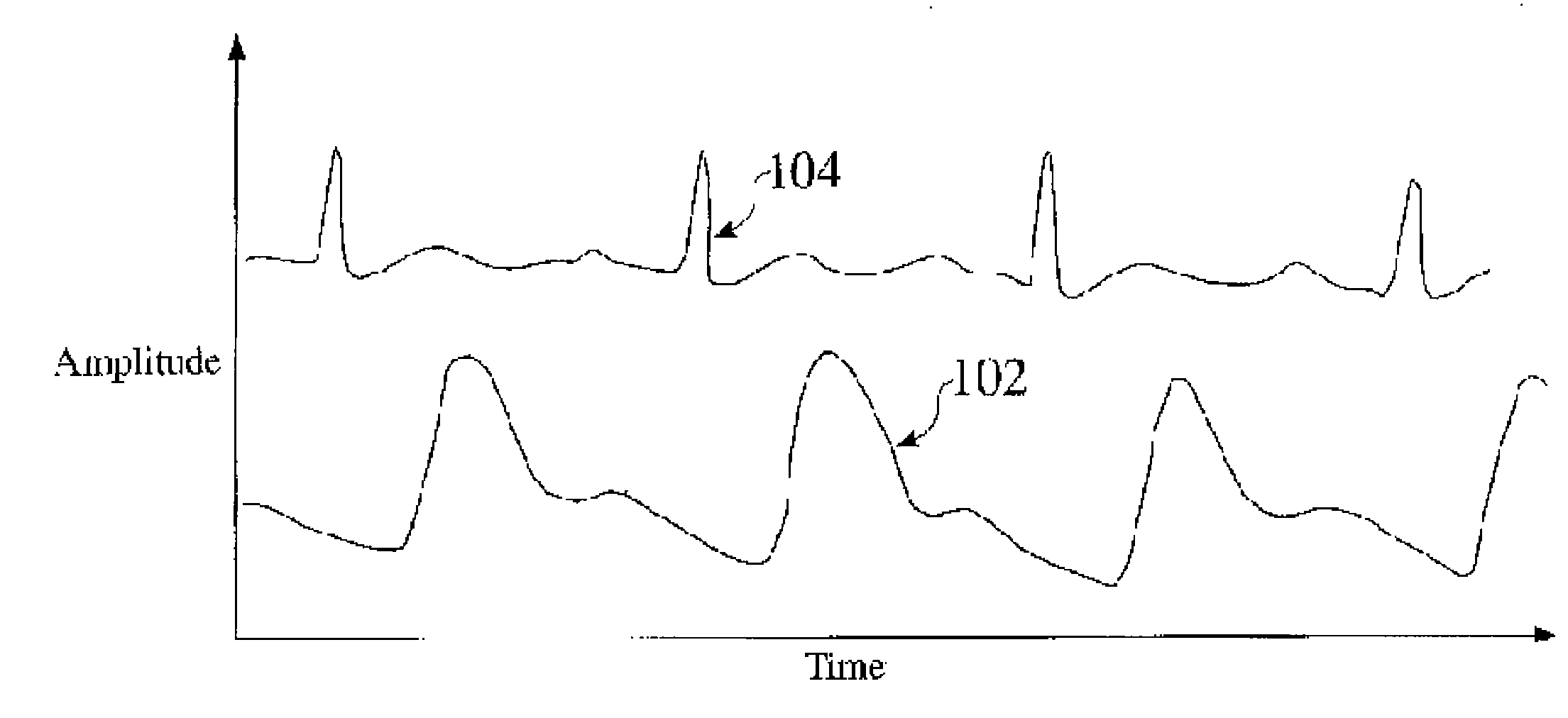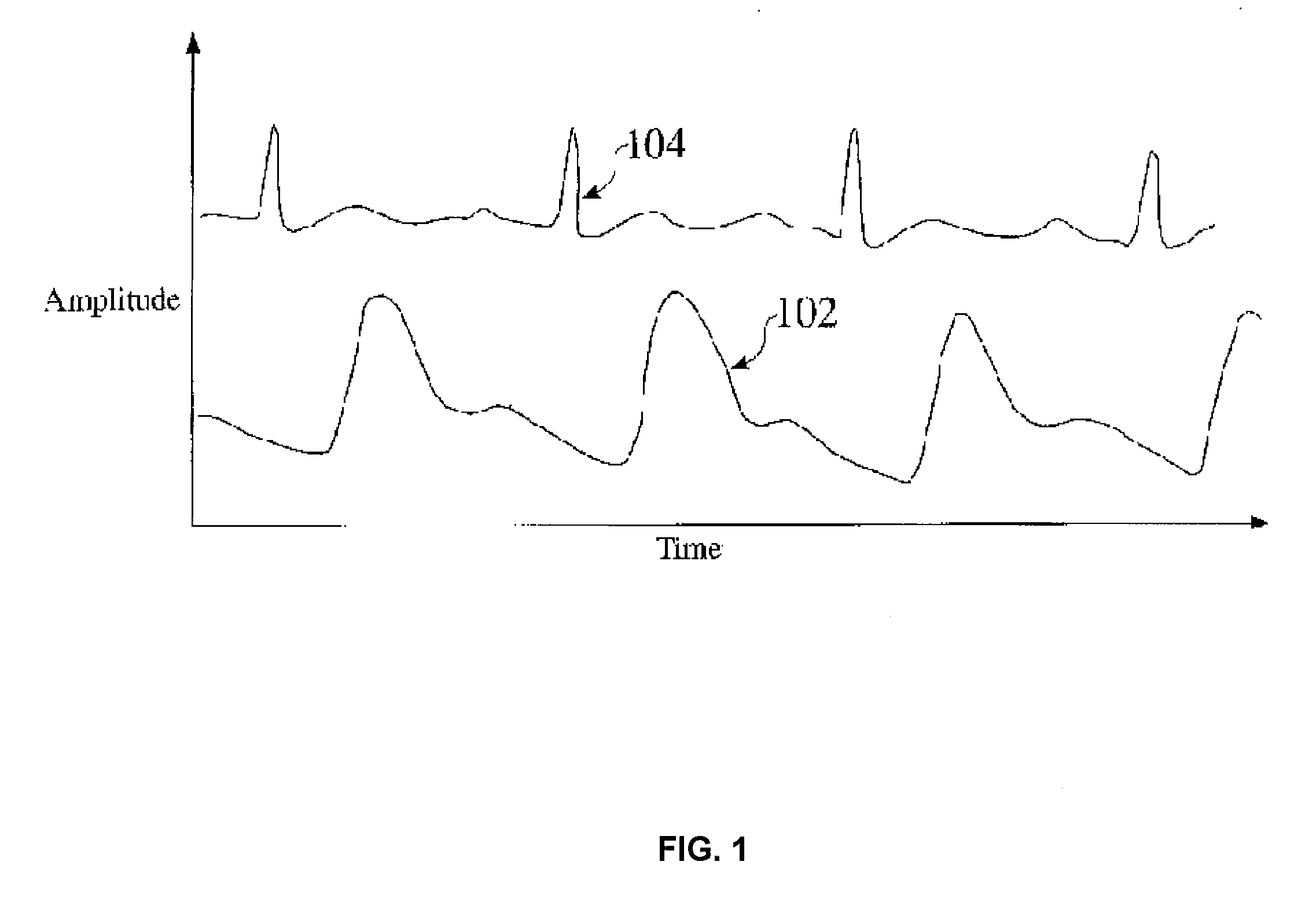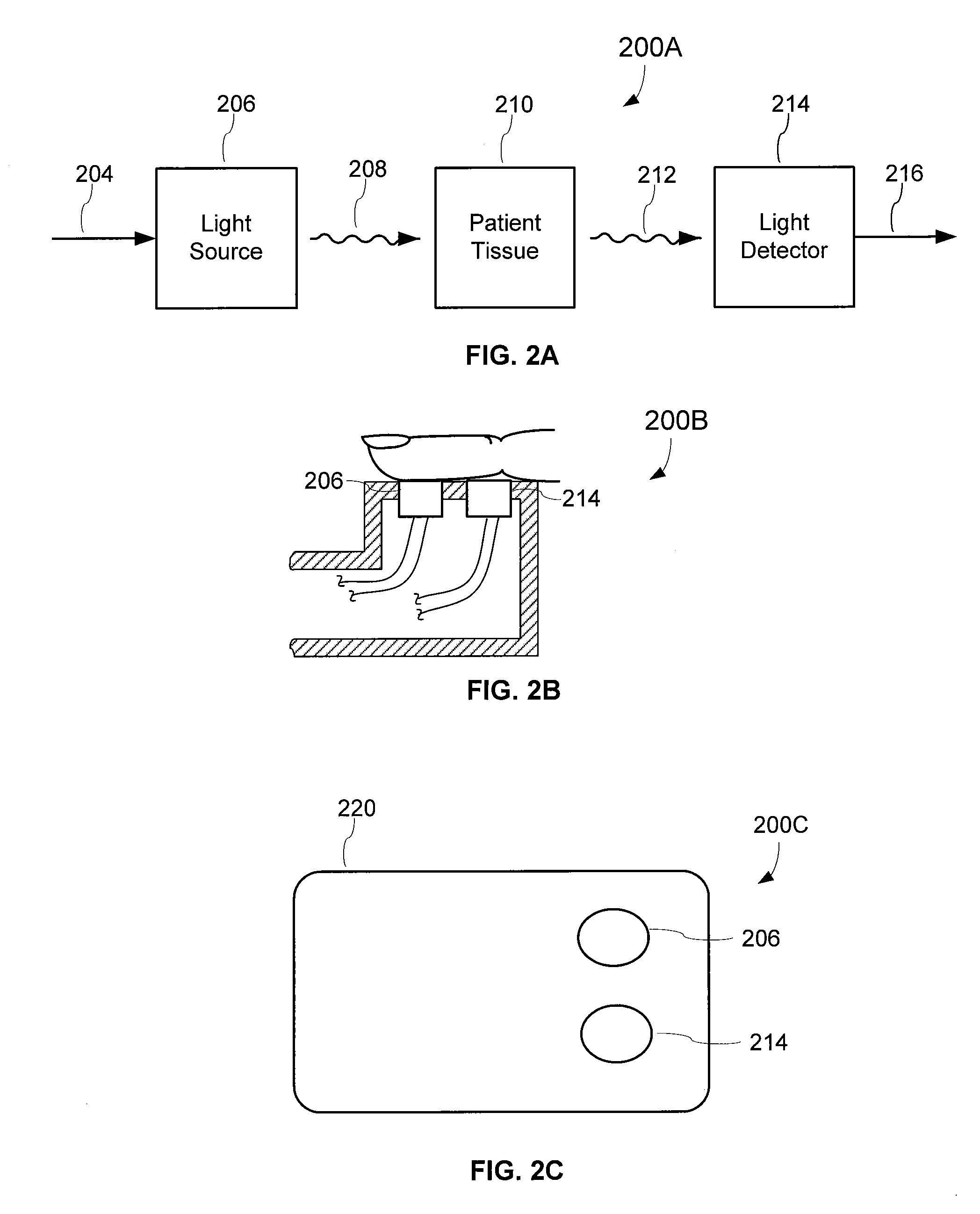Methods, systems and devices for monitoring respiratory disorders
a technology of respiratory disorders and monitoring devices, applied in the field of respiratory disorders monitoring devices, can solve the problems of increased mortality and morbidity, neuropsychiatric and behavioral disturbance, death, etc., and achieve the effect of preventing the interruption of breathing intermittently during sleep
- Summary
- Abstract
- Description
- Claims
- Application Information
AI Technical Summary
Benefits of technology
Problems solved by technology
Method used
Image
Examples
Embodiment Construction
[0042]As a person breathes, the intrathoracic pressure, which relates to pressure inside the chest, changes accordingly. More specifically, as a person inhales during breathing, the chest expands and there is a slight decrease in intrathoracic pressure, relative to atmospheric pressure, which drives air into the lungs. With exhalation, there is an increase in intrathoracic pressure that forces air out of the lungs. These changes in intrathoracic pressure also cause subtle changes in the way blood returns to the heart through veins, and is pumped from the heart through arteries.
[0043]In other words, changes in intrathoracic pressure that results from respiration effect how quickly blood will return from veins into the right side of the heart. As a person inhales, there is lower pressure in the chest as compared to the periphery (e.g., limbs), due to the decrease in intrathoracic pressure. This pressure gradient causes blood to flow back to the chest. Conversely, when a person exhales...
PUM
 Login to View More
Login to View More Abstract
Description
Claims
Application Information
 Login to View More
Login to View More - R&D
- Intellectual Property
- Life Sciences
- Materials
- Tech Scout
- Unparalleled Data Quality
- Higher Quality Content
- 60% Fewer Hallucinations
Browse by: Latest US Patents, China's latest patents, Technical Efficacy Thesaurus, Application Domain, Technology Topic, Popular Technical Reports.
© 2025 PatSnap. All rights reserved.Legal|Privacy policy|Modern Slavery Act Transparency Statement|Sitemap|About US| Contact US: help@patsnap.com



